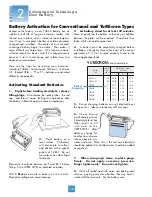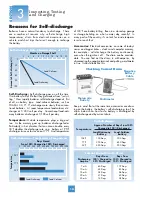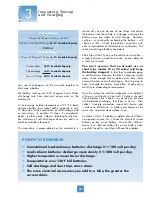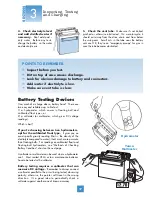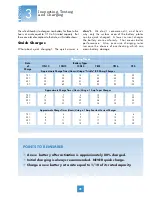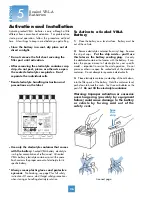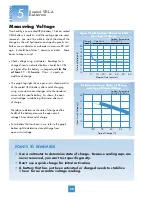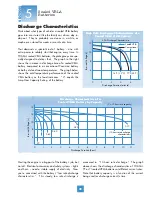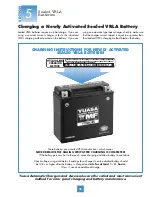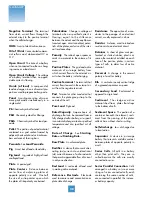
POINTS TO REMEMBER
❐
Monthly maintenance and testing are a must.
❐
Most important: make sure battery is charged and fluid level is correct.
❐
Disconnect cables or pull battery for storage.
❐
Keep fully charged to prevent sulfation and freezing.
Freezing:
It shouldn’t bother you – unless a battery is
inadequately charged. Looking one more time at the
discharge process, remember that electrolyte acid becomes
water as discharge occurs. Now, it takes Arctic temperatures
to freeze acid. But water... as we all know, freezing starts
at 32°F. A sign of this is mossing – little red lines on the
plates. Freezing can also crack the case and buckle the
plates, which means the battery is permanently damaged.
A fully-charged battery can be stored at sub-
freezing temperatures with no damage.
As the
chart at right shows, it takes -75°F to freeze electrolyte in
a charged battery. But at just a couple degrees below
freezing – at +27°F – a discharged battery’s electrolyte
turns to ice. That’s a difference of more than 100°F
between the low temperatures a charged and discharged
battery can stand.
Electrolyte Freezing Points
Specific Gravity
of Electrolyte
Freezing Point
1.265
-75°F
1.225
-35°F
1.200
-17°F
1.150
+ 5°F
1.100
+18°F
1.050
+27°F
23
At temperatures such as these, incidentally, the self-
discharge rate of a battery is so low that a recharge
usually isn’t needed for months. But to stay on the safe
side, test.
4
SECTION
Maintenance
and Storage
Summary of Contents for SmartShot YUA1201501
Page 1: ......




